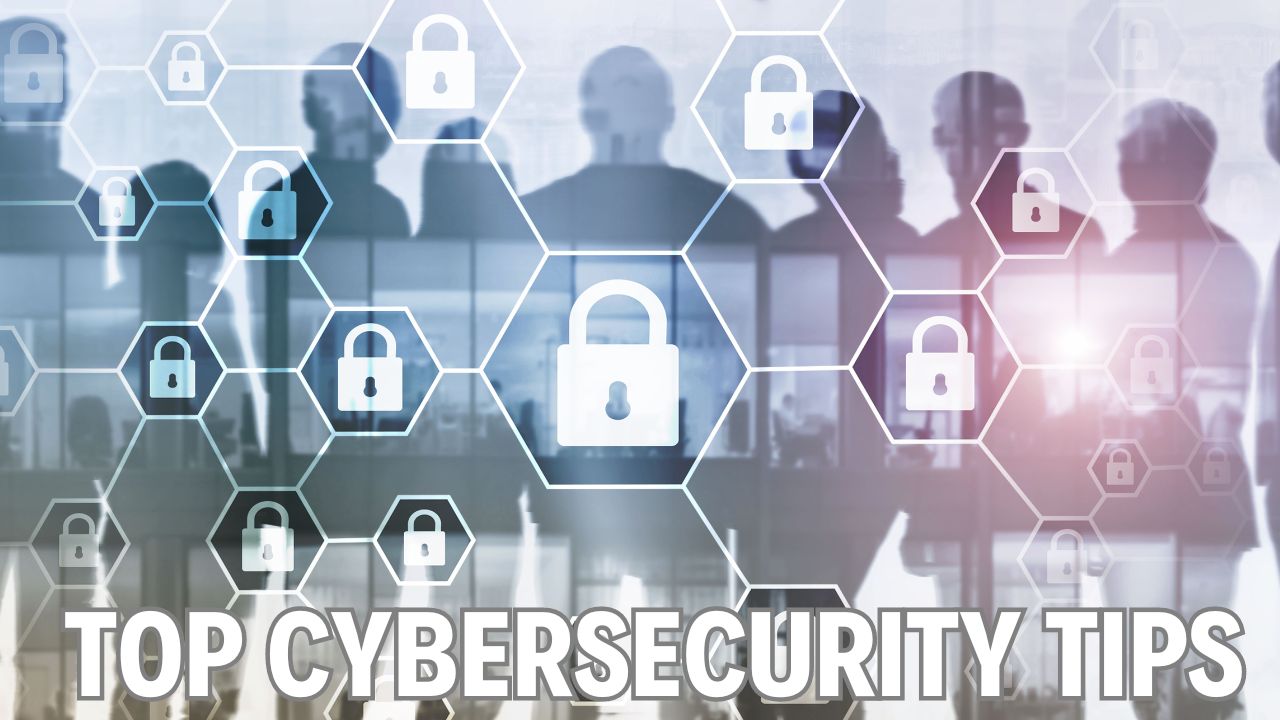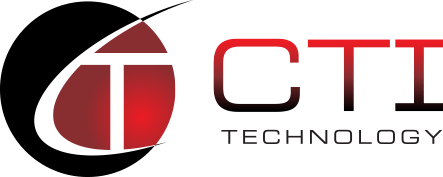Top Cybersecurity Tips for Your Employees: Essential Strategies for Workplace Security
In today’s digital age, protecting your organization’s data and systems from cyber threats is not just the responsibility of the IT department—it’s a collective effort. Your employees are a crucial defense against cyberattacks that could compromise sensitive information. Empowering your team with the knowledge and tools to identify and respond to security risks is essential for safeguarding your company’s cyber health.
Training employees on cybersecurity basics, such as creating robust passwords and identifying phishing attempts, is vital to build this resilience. Encouraging safe internet browsing practices and understanding how to secure personal and company data can dramatically reduce vulnerabilities. Moreover, as remote work becomes more common, it’s important to establish clear guidelines to ensure employees maintain security when outside the office network.
Key Takeaways
- Employees must be versed in cybersecurity best practices.
- Robust passwords and phishing awareness enhance security.
- Remote work protocols are critical for data protection.
Understanding Cybersecurity Fundamentals
In this section, you’ll learn about the critical need for cybersecurity awareness and familiarize yourself with the common cyber threats and vulnerabilities that could impact your organization.
Importance of Cybersecurity Awareness
Cybersecurity is not just a concern for IT professionals; it’s your responsibility. Awareness of your vital role in safeguarding your company’s data is crucial. Cybersecurity awareness involves recognizing the potential risks and understanding the measures you can take to prevent breaches. This includes:
- Recognizing phishing attempts.
- Using strong and unique passwords.
- Understanding the concept of least privilege and not accessing information beyond your necessity.
Common Cyber Threats and Vulnerabilities
You must identify common cyber threats to protect your organization effectively. Some of the most frequent dangers include:
- Phishing Attacks: Malicious emails trick you into providing sensitive information or downloading malware.
- Malware: Software designed to disrupt, damage, or gain unauthorized access to your computer systems.
- Ransomware: A type of malware that locks or encrypts your data, demanding payment for its release.
- Insider Threats: Risks posed by individuals within your organization who might misuse their access to sensitive information.
Additionally, be aware of vulnerabilities such as:
- Unpatched Software: Software that hasn’t been updated with the latest security patches can be exploited by cybercriminals.
- Weak Passwords: Simple passwords can be easily cracked, giving attackers access to your accounts.
- Insecure Networks: Using unsecured public Wi-Fi networks can expose data to hackers’ interception.
Regularly updating your software and understanding app permissions can significantly reduce these vulnerabilities.

Creating Strong Passwords
Creating strong passwords is critical to safeguarding sensitive data from cyber threats in today’s digital landscape.
Password Management Best Practices
Select Unique Passwords: Each of your accounts should have its own password. Don’t reuse passwords across multiple sites or applications, as this can lead to a domino effect of security breaches.
- Length and Complexity: Your passwords should be at least 12 characters long and include a mix of upper- and lowercase letters, numbers, and symbols to increase their complexity.
- Avoid Personal Information: Never include identifiable information like your name, birth date, or common words that could be easily guessed.
- Update Regularly: Change your passwords periodically, ideally every three months, to reduce the risk of being compromised.
- Password Managers: Consider using a password manager. These tools generate and store complex passwords, requiring you only to remember one strong master password.
Using Two-Factor Authentication
Activate 2FA: Always enable two-factor authentication (2FA) when available. 2FA adds an extra layer of security by requiring a second form of identification beyond just your password.
- Variety of Methods: This can include something you have (like a phone or a hardware token), something you are (like a fingerprint or facial recognition), or something you know (an additional PIN or answer to a security question).
Recognizing and Preventing Phishing Attacks
Phishing attacks are a serious security threat that can lead to data breaches and financial loss. Equip yourself with knowledge and vigilance to effectively identify and combat these deceptive practices.
Types of Phishing Techniques
- Email Phishing is the most common type. In this type, you’ll receive an email that appears to be from a legitimate source, urging you to click on a link or provide sensitive information.
- Spear Phishing: A more targeted form of phishing involves emails directed at specific individuals or companies, often using personal information to appear convincing.
- Whaling: This technique targets high-level executives with more sophisticated email content, attempting to steal substantial amounts of money or sensitive company information.
- Smishing and Vishing: These types involve phishing via SMS (smishing) and voice calls (vishing) to coax personal details from the victim, like passwords or banking details.
Identifying Suspicious Emails and Links
When evaluating emails and links for signs of phishing, look for these red flags:
- Unusual Requests: Be skeptical of emails asking for confidential information, especially if they demand urgency.
- Sender’s Email Address: Check the sender’s email to see if it matches the legitimate organization’s domain.
- Links and Attachments: Hover over links without clicking to view the URL. If it looks suspicious or doesn’t match the legitimate site, don’t click. Be wary of unexpected email attachments.
- Poor Grammar and Spelling: Official communications rarely have significant spelling or grammar errors.
- Generic Greetings: Phishing attempts often use generic salutations like “Dear Customer” instead of your real name.
Safe Internet Practices
This section will focus on securing devices and employing safe browsing to protect against online threats.
Securing Personal and Work Devices
To safeguard against cybersecurity risks, it’s essential to secure both personal and work-related devices.
- Keep Your Systems Updated: Regularly update the operating system and all applications to ensure that all security patches are applied.
- Strong Passwords and Authentication: Use complex passwords combined with multi-factor authentication to add an extra layer of security.
- Install Antivirus Software: Ensure reliable antivirus software is installed and updated on all devices.
- Encrypt Sensitive Data: Ensure it’s encrypted when storing or transferring sensitive information.
- Physical Security: Never leave devices unattended in public spaces; keep them locked when not in use.
Safe Browsing Techniques
Maintaining vigilance while browsing the internet is crucial to avoid falling prey to cyber threats.
- Avoid Suspicious Links: Hover over links before clicking to verify the URL, and be wary of unsolicited links in emails or messages.
- Use Secure Connections: Favor HTTPS websites and avoid conducting sensitive transactions over public Wi-Fi networks.
- Ad Blockers and Security Extensions: Use ad blockers and browser security extensions to minimize the risk of malware infections.
- Regularly Clear Browser Cache: Clear your browsing history, cookies, and cache regularly to reduce information leakage.
- Review Privacy Settings: You can adjust your browser’s privacy settings to control the sharing of your data with websites.
Working Remotely
With the rise of remote work, it’s critical to ensure that your home office matches the security posture of a traditional office. These tips will help maintain the integrity of your data and the company’s digital infrastructure.
Securing Home Networks
Change Default Router Settings: Most routers have default usernames and passwords that are easily found online. Ensure you change these credentials to something unique and complex.
Enable Network Encryption: Look for settings on your router to enable WPA2 or WPA3 encryption, making it more difficult for unauthorized users to access your network.
Regular Firmware Updates: Keep your router’s firmware up-to-date to protect against known vulnerabilities. Check the manufacturer’s website for the latest updates.
Using Virtual Private Networks (VPN)
Use Company-Approved VPNs: A VPN creates a secure tunnel for your data, encrypting it from your device to the company servers. Always use the VPN provided or approved by your employer.
Avoid Public Wi-Fi for Work: Even with a VPN, avoid using public Wi-Fi networks for work-related tasks when possible, as they can be insecure and expose your data to cyber threats.
Email Security Protocols
In an era of escalating digital threats, adopting robust email security protocols to safeguard your communications and sensitive data is essential.
Secure Email Communication
Implement strong authentication measures to ensure only authorized individuals can access email accounts. Multi-factor authentication (MFA), which may include a combination of passwords, biometrics, and security tokens, is indispensable for enhancing account security. Additionally, you should regularly update and manage strong, unique passwords for different services.
Encrypt your email communications to protect the confidentiality of message content. Utilize Transport Layer Security (TLS) for encryption in transit and consider end-to-end encryption options such as PGP (Pretty Good Privacy) for highly sensitive exchanges. Ensure all employees are trained on how to use these encryption tools effectively.
Handling Sensitive Information
When dealing with sensitive information, you must be especially vigilant. Never send unprotected sensitive data via email unless it is encrypted and secure. Familiarize yourself with and adhere to your organization’s data handling policies and guidelines.
Use secure methods for sharing large files or sensitive data, such as secure file transfer protocols or encrypted file-sharing services. Be cautious with email attachments; verify the sender and scan for malware before opening. Lastly, watch for phishing attempts and report any suspicious emails to your IT security team.
Implementing Device Security Measures
Protecting your devices is a critical step to safeguard your organization’s data. This encompasses maintaining up-to-date software and defending against malicious software threats.
Regular Software Updates
You must regularly update all software and operating systems to prevent security breaches. These updates often include:
- Patches for newly discovered vulnerabilities.
- Enhancements that improve security features.
Follow a consistent schedule to check for updates and enable automatic updates when possible.
Anti-Malware and Antivirus Solutions
Protecting your devices against malware and viruses is non-negotiable. Ensure you have robust anti-malware and antivirus solutions in place that:
- Continuously Scan for threats in real-time.
- Update Automatically to recognize the latest malware signatures. Always keep these security solutions active and never disable them.
Data Protection and Privacy
Protecting sensitive data and adhering to privacy laws are crucial for maintaining your company’s integrity and customer trust. Ensuring the security of this data involves encryption techniques and compliance with legal regulations.
Understanding Data Encryption
To safeguard your data, familiarize yourself with encryption. This process converts information into a code to prevent unauthorized access. Here are key aspects you should know:
- At Rest: Your data needs to be encrypted at rest—this means when it’s stored on servers or any device.
- In Transit: Data must also be protected; ensure it’s encrypted when sent over the network.
Complying with Data Privacy Laws
Compliance with data privacy laws is non-negotiable. These laws vary depending on your location and industry but generally require the following:
- Personal Data Handling: Understand what constitutes personal data and ensure you handle it in line with legal requirements.
- Data Subject Rights: Be aware of data subjects’ rights, such as accessing or erasing their personal data.
Failure to comply with privacy laws can result in substantial fines and damage your company’s reputation.
Incident Response Planning
Crafting a watertight Incident Response Plan (IRP) is crucial for minimizing the impact of cyber threats and swiftly resuming normal operations post-incident. This section will walk you through the essentials of building and implementing an IRP to fortify your organization’s cyber resilience.
Developing an Incident Response Plan
To develop your Incident Response Plan, begin with these core steps:
- Define Your Incident Response Team: Establish roles and responsibilities for your team members, including who leads and supports in various incident scenarios.
- Identify and Prioritize Assets: List your organization’s assets, ranking them from most to least critical. This helps to focus your response where it’s most needed.
- Threat Assessment: Know your enemy by identifying potential threats and vulnerabilities through risk assessments.
- Response Procedures: Draft response actions for different types of incidents. Tailor your approach to specific scenarios, such as phishing or ransomware attacks.
- Communication Strategy: Outline how and when to communicate both internally and externally. Decide on communication channels and reporting hierarchies.
- Review and Test Regularly: An IRP is a living document. Conduct regular drills and update the plan based on new threats or lessons learned from drills and past incidents.
Training Employees on Response Procedures
Training is the backbone of effective incident response:
- Develop Training Modules: Create comprehensive training material that covers various incident scenarios your team may face.
- Simulate Incidents: Role-playing exercises and simulations can help your team practice the IRP and refine their skills in a controlled environment.
- Review and Enhance: After each training session, gather feedback to improve future training and incident handling procedures.
Continuing Education in Cybersecurity
Investing in your ongoing education is crucial for keeping pace with the rapidly evolving landscape of cybersecurity threats and solutions.
Attending Cybersecurity Workshops
You should actively participate in cybersecurity workshops. These workshops are often offered by specialized training organizations or industry groups. They provide hands-on experience and practical knowledge that can help you respond effectively to cybersecurity incidents. Ensure you attend workshops that address current security issues and also cover fundamental cybersecurity principles.
Staying Informed on the Latest Security Trends
You must stay informed about the latest developments in the field of cybersecurity. This includes familiarizing yourself with emerging threats and new tools and technologies designed to combat these risks. You can stay up-to-date by:
- Subscribing to reputable cybersecurity newsletters
- Following thought leaders and industry experts on social media
- Reading recent publications on cybersecurity trends and statistics
- Attending relevant webinars and online courses offered by industry experts
Why Is CTI Technology The Best Choice For IT Services In The Chicagoland Region?






















